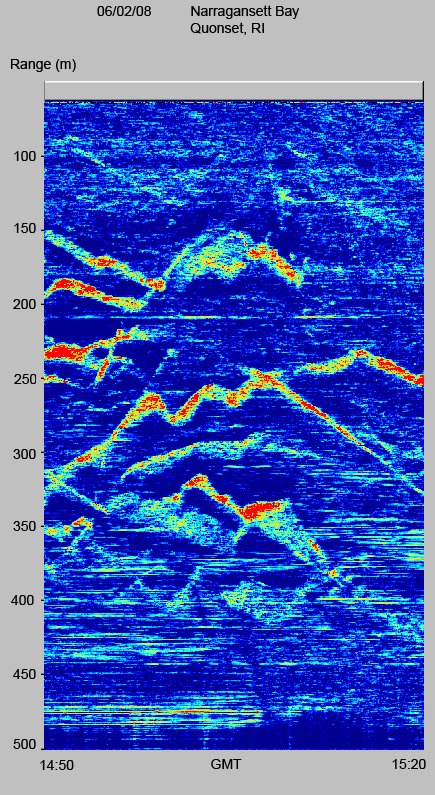Detecting Marine Life with Our Sonar
Lots of people have asked us if we can see fish and other small marine life. The original motivation for FarSounder's sonar technology came from protecting the marine environment. We wanted to find a way to reduce the chances oil spills and the killing of protected species such as whales due to misguided ocean vessels. Our navigation products have been designed for 3D forward looking obstacle avoidance and are able to detect obstacles like large whales and rocks using environmentally benign signals.
Over the years, we've had the chance to participate in a number of in water experiments where we have seen various marine fauna. Fish have very small acoustic reflections and are not navigational hazards, so we generally try to filter them out from our navigation displays using various signal processing techniques.
In normal navigation operation, our systems map the bottom and show obstacles in front of the boat in 3D space (range/bearing/depth). However, the information we gather is actually 4D (range/bearing/depth/time). When working on R&D projects, we often like to look at our raw acoustic data in a waterfall display which displays the data in range/time for a selected angle (azimuth and elevation). Multiple waterfalls show us multiple angles and provide a different set of 3D information.
The following screen shots are some waterfall examples showing fish schools and manatees tracks for the 2D (range/time) cross-sections of the above said 4D space. They tell the history of the object positions, namely how the object's distance from the sonar varies in time.
Waterfall showing fish school activity as red and orange "squiggles".
Waterfall showing two manatee and a boat passing through a lock.
The fish school tracks are very solid, bright red because the large school makes a good reflector. Manatees tracks, however, are much less bright. This is because the manatee is a very poor acoustic reflector (15 times less reflective than a dolphin).
Our sonars are safe for the marine environment as they are low power, have a slow ping rate, are a short duration, and are well within the accepted frequencies for commercial marine sonars. While the sonar was pinging in Cape Canaveral, the manatees paid absolutely no attention to it. They kept swimming very close to the boat where the sonar was installed.
Two manatees hanging out near our boat.
We've found a lot of interesting scenarios in the records we made. In some of our recordings we even think we're seeing predetory actions of one fish type preying on another fish type. As far as we know, this is an entirely new type of data that could be used by fisheries scientists in their research. We're now beginning to work with some groups of scientists to help them use our technology as a tool in their work.



